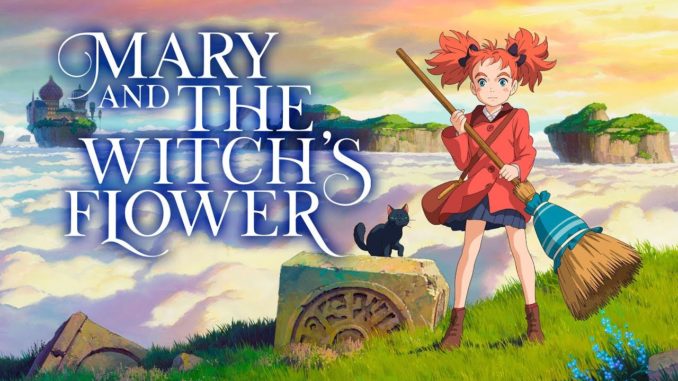
Since the early age of childhood, young boys and girls dreamed to be someone when they are older, whether to be an astronaut, a cowboy, a princess, a superhero or even a witch. Well, what if, for one day or even just for a few hours, you had the ability to do be whomever you wanted?
Adapted from Mary Stewart’s 1971 children’s fantasy novel The Little Broomstick, Mary and the Witch’s Flower was directed by Hiromasa Yonebayashi, a veteran key animator from Studio Ghibli, who previously worked on several projects with legendary anime director Hayao Miyazaki on film such as Spirited Away, From up on Poppy Hill and was the director for The Secret World of Arrietty, and the influence and impact from Miyazaki certainly shows. Throughout the film, hardcore fans will be able to see references and shout-outs from other Ghibli films such as Ponyo, Kiki’s Delivery Service, Howl’s Moving Castle and even Castle in the Sky.
Though Yonebayashi and others brought this film to life, formerly worked with Studio Ghibli, Mary and the Witch’s Flower is not a Ghibli film, but rather it is the first animated feature film produced by Studio Ponoc. and as far as first films go, Mary and the Witch’s Flower show the artistic talents and integrity of a new generation of animators, by showing us a magical world of childlike adventure and wonder.
The story follows Mary Smith (voiced by Ruby Barnhill), a girl with a name so bland and generic as can be, that she is anything but. With her fiery and wild red hair, Mary is an upbeat, energized young girl, and always eager to help, though a bit clumsy. She struggles with boredom and loneliness as she stays with her great-Aunt Charlotte (Lynda Baron) in the rural countryside, along with housekeeper Ms. Banks (Morwenna Banks) and groundskeeper Zebedee (Rasmus Hardiker) as she waits for her parents to arrive home and for school to start.
Naturally being a young girl, Mary is also curious and adventurous, and she finds herself up in the woods and discovers the eponymous witch’s flower along with a broomstick with indecipherable writing on it. Mary, being her accident-prone self, ends up squishing one of the magical flower’s seed and ignites the broomstick, which sends her flying to the clouds.
She eventually ends up in Endor College, a magical school of witchcraft and wizardry that even teaches science, set high in the sky for wizards, warlocks and witches run by Madame Mumblechook (Kate Winslet) and her right-hand man mad scientist/professor Doctor Dee (Jim Broadbent). Think of Endor College as a futuristic Hogwarts among the clouds, where students can learn to fly their broomsticks, make potions, turn invisible and can also learn chemical equations. However, soon enough she begins to find that the magical school is not what it seems and begin to discover hidden secrets of the college and of her own.
Though the story is basic coming of age anime fantasy film, it is the art that brings you into the movie. At times throughout the film, one would get the impression that the visual backgrounds were once paintings that belonged in an art museum and that Yonebayashi and his team stole them, but no. Rather, it took hard work and dedication to bring Mary and her magical world to life. Ruby Barnhill and her cast members all performed their roles well, each fitting their roles into the characters they portrayed. Barnhill (granted she’s a pre-teen, but still) performed her role as Mary as young, doubtful, in-experience but still a heroic and adventurous adolescent.
Though visual and voice acting aspect of the film were well done, the music felt too atmospheric at times, to point of being filler sound, and it felt it was just added in the background so the audience can have something to listen in the quiet dramatic moments of the film. Takatsugu Muramatsu was the composer of the film, and unfortunately, he did not compose any memorable pieces such as “Adriano No Mado†in Porco Rosso, “One Summer’s Day†in Spirited Away, or “Path of the Wind†in My Neighbor Totoro, all of which were composed by Joe Hisaishi.
Mary and the Witch’s Flower is not so different from other Ghibli films, as the clichés and tropes such as beautiful landscapes, flying, magic and fantastic beings and of course the strong action girl can be found in the film, even two studios have similar logos. However, Studio Ponoc was able to capture the traits and qualities that make Ghibli so great and memorable into Mary, both the film and the character. Only time will tell if the student will one day become the master.


Leave a Reply